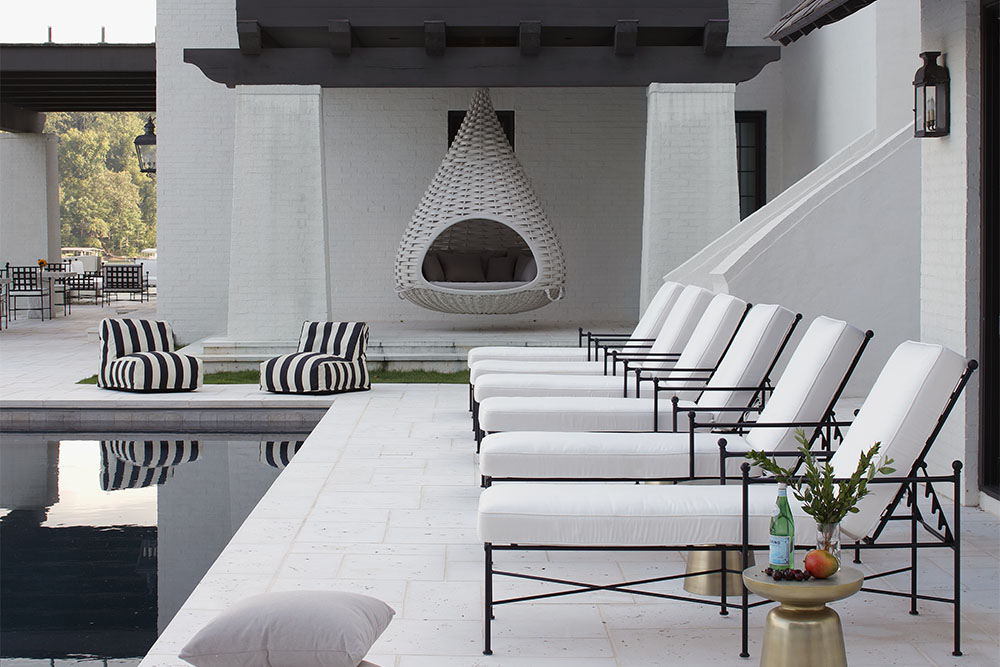

The hardscape surrounding a pool is referred to by a variety of different names: pool patio, pool deck, pool decking, and pool surround, just to name a few.
Whatever you call the space around your pool, odds are, you’ll spend more of your time on the pool patio than in the pool! Whether you’re throwing a pool party or just lounging in the sun, your pool deck is likely to see the most action. That’s why making the right decisions when it comes to size and material of your pool surround are critical to your overall enjoyment of the area.
If you’re building an in-ground pool, you’ve probably already dropped a pretty penny on the labor that goes into it and are looking to cut costs elsewhere. If you want to get the most out of your pool, fight the urge to save money by skimping out on the pool surround.
For a lot of pool owners, their number one regret is that they underestimated how much time they would spend poolside (but not actually in the pool) and didn’t make their pool patio big enough.
If you’re wanting to surround your pool with furniture, that takes up space! And if you’re planning on having friends or family over, you need to leave enough room for people to maneuver.
Here are a few good space estimates to keep in mind when planning your pool deck[1]:
Based on those numbers above, a 12’ x 24’ rectangular pool with a seating area, a small dining area, and a couple chaise lounges, you’re looking at needing a patio somewhere between 1,080 square feet and 1,430 square feet. That gives you plenty of space to lounge poolside!
Now if you’ve run the numbers and found that your dream pool deck is just not in the budget, don’t get discouraged. It’s possible to tackle your pool patio in stages if it’s planned for in advance.
Whether you’re building the whole kit and caboodle now, or you’re building it in phases, it’s important to know just how much space you’ll need for your pool deck.
Once you’ve determined how large your pool patio needs to be, you’ll need to decide what material you want to use.
Choosing a material isn’t just pure aesthetics. There are variety of criteria to consider, including:
Below, we’ve broken down the most popular materials according to cost and their pros and cons.
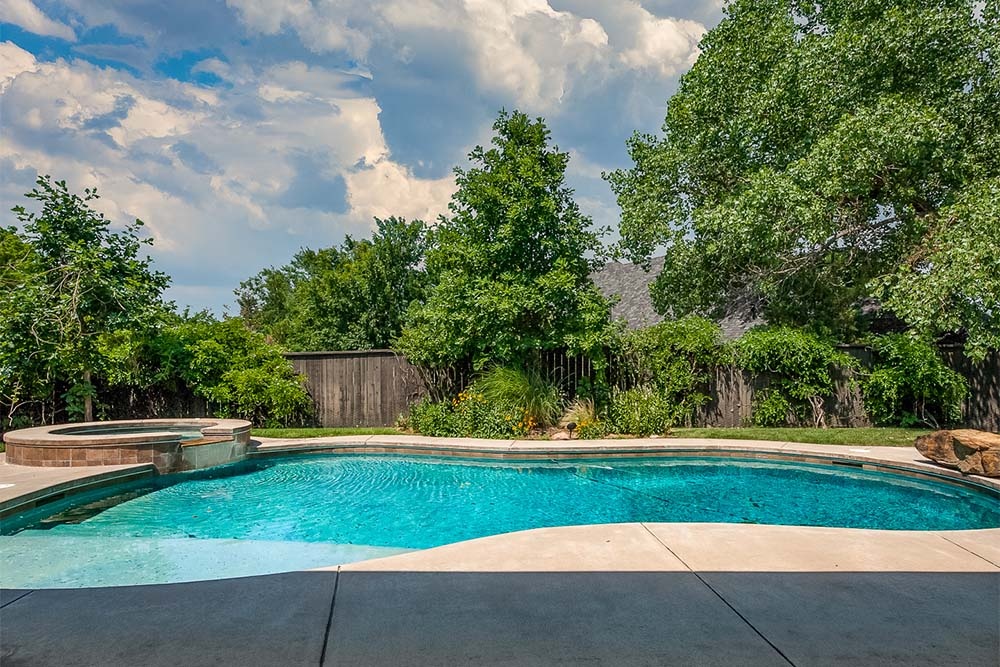
"Oak Tree | 1303 Saint Andrews Edmond OK" by Bill Wilson is licensed under CC BY 2.0
Poured concrete is one of the most popular pool decking materials due to its cost-efficiency. It comes in a variety of neutral colors and can be finished a number of ways (including smooth, brushed, or with aggregate) to match your personal preference. Concrete can also be stamped with designs to give more flair, if you’re wanting something other than a smooth surface.
Cost: Poured concrete is the cheapest option on our list, in terms of materials. It’s also highly cost efficient if you’re pouring a large pool patio. However, bear in mind that unless you’re an expert DIY-er, a concrete pool surround should be poured by a professional, which adds to the final cost.
Pros:
Cons:
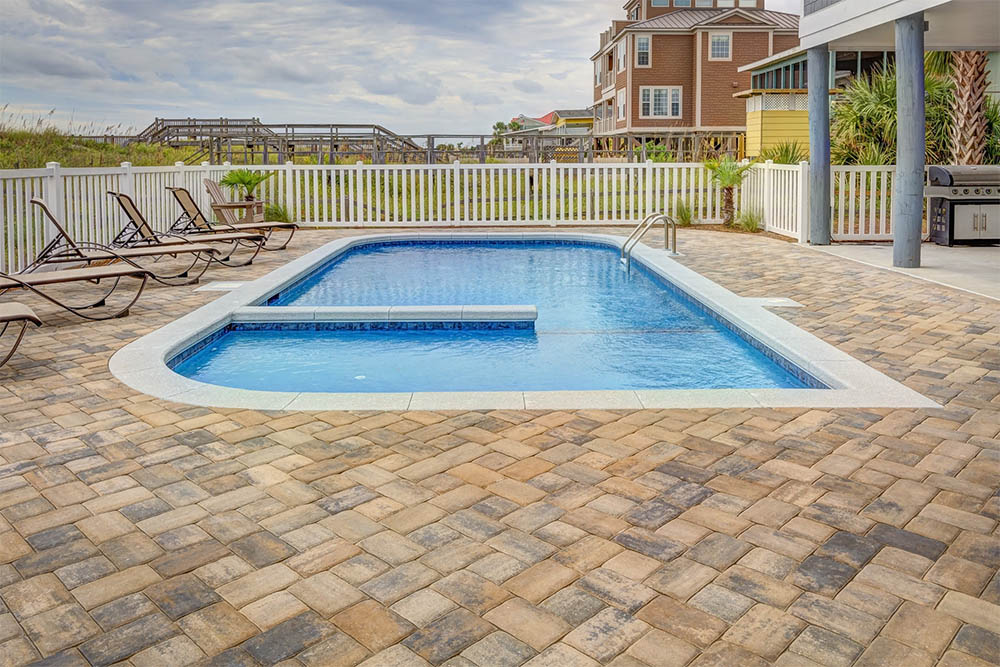
Brick (or clay pavers) have been around for centuries, are a beautiful, durable material for a pool deck. They are great for achieving a consistent or patterned look, and have wonderful color retention, so they won’t fade quickly.
Cost: If you’re going with true brick, which is made of clay, expect a higher price tag (clay pavers can cost 15% to 20% more than a similar looking concrete paver). Brick is among the more expensive options on our list.
Pros:
Cons:
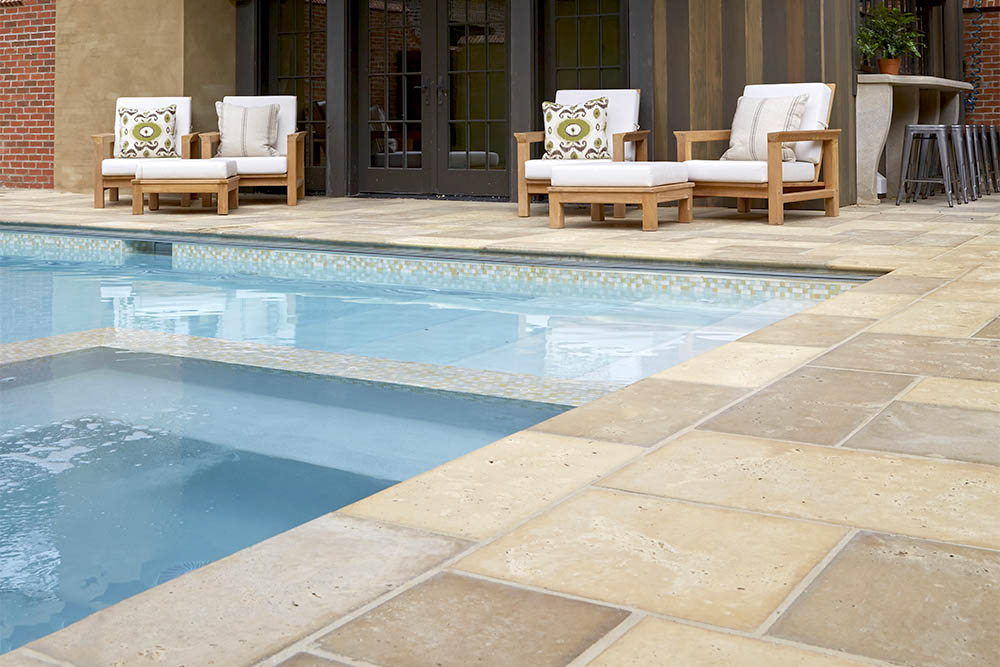
Concrete pavers are extremely popular for hardscapes due to their variety of sizes, colors, and patterns to suit your personal preference. They also come in a variety of price points, depending on manufacturing method, making it easy to find a solution that fits your budget.
Cost: Paver costs are largely dependent on whether you purchase a dry cast concrete paver (like the paving stones you can pick up at a big box store like Lowe’s or Home Depot) or a wet cast concrete paver (like FireRock’s concrete pavers). Dry cast concrete pavers tend to be on the lower end of the scale, whereas wet cast concrete pavers tend to be closer to the price point of natural stone.
Pros:
Cons:
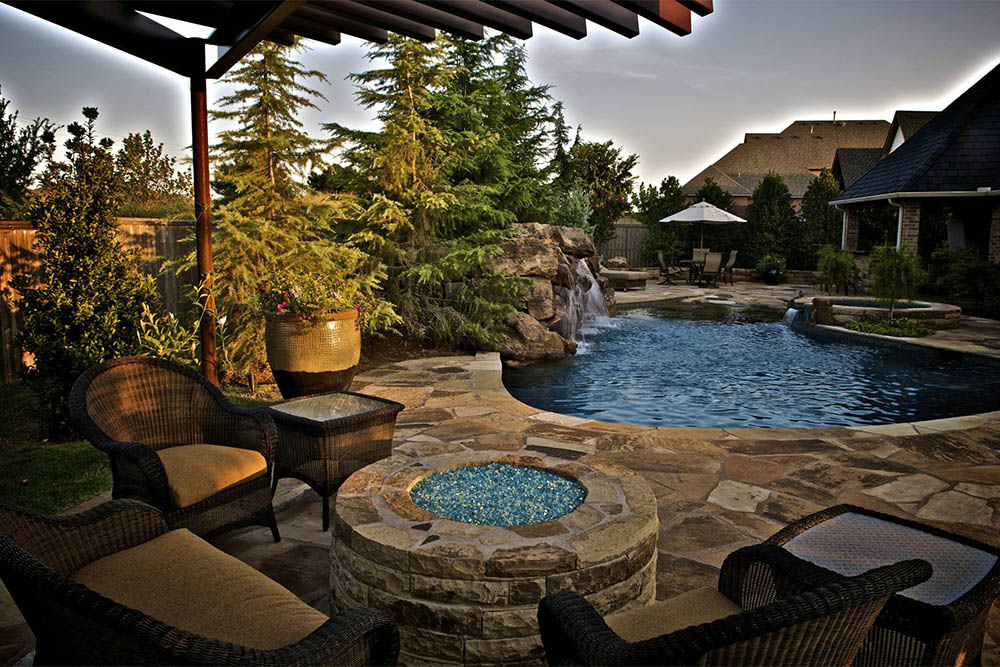
"Rose Creek Estate" by Caviness Landscape Design is licensed under CC BY 2.0
Natural stones, such as flagstone, bluestone, and travertine, have long been a popular choice for hardscapes and offer a beautiful, natural look for your pool patio.
Cost: Natural stone tends to be among the pricier of pool patio materials available. Bear in mind that the price of using a natural stone paver will vary based on a few options, including type of stone and whether you a natural or more uniform look.
Pros:
Cons:
Whether you’re building a modest pool for your own enjoyment or want an extravagant pool where you can entertain friends and family, you’ll need to put the time and effort into thinking through the size and materials you want for your pool patio. And if you’ve done your job right, you’ll be able to enjoy your pool in the water and on the deck.
[1] Jason Hughes. “How Much Swimming Pool Patio Do I Need?,” River Pools, June 1, 2009, https://www.riverpoolsandspas.com/blog/how-much-swimming-pool-patio-do-i-need.